issue contents
August 2009 issue

Cover illustration: Adenylate kinase from the psychrophile M. marinus (Davlieva & Shamoo, p. 751).
structural communications
The crystal structure of DmsD from E. coli has been determined at 2.4 Å resolution.
PDB reference: DmsD, 3cw0, r3cw0sf
The crystal structure of adenylate kinase from the psychrophile M. marinus has been determined at 2.0 Å resolution and the kinetic parameters of this cold-adapted enzyme have been examined.
PDB reference: adenylate kinase, 3fb4, r3fb4sf
The crystal structure of the choline-binding domain of Spr1274 (residues 44–129) has been solved at 2.38 Å resolution with three molecules in the asymmetric unit.
PDB reference: choline-binding domain of Spr1274, 3hia, r3hiasf
The crystal structure of the Z-isomer of 2,4-diamino-5-[2-(2′-methoxyphenyl)-propenyl]-furo[2,3-d]pyrimidine shows an unusual packing arrangement in which the conserved active site Arg70 forms a salt bridge to the side chain of Glu44 from a symmetry-related molecule.
PDB reference: hDHFR–NADPH–Z1 complex, 3gyf, r3gyfsf
crystallization communications
The crystallization and preliminary diffraction analysis of a β-galactosidase from T. reesei is described. The crystals diffracted to 1.2 Å resolution.
Open  access
access
 access
accessThe crystallization is reported of two bacterial tyrosine phosphatases which belong to different enzyme families despite their ability to catalyse identical reactions.
Haemoglobin from Camelus dromedarius provides an interesting case study of adaptation to life in deserts at extremely high temperatures. An ambition to unravel the integrated structural and functional aspects of the casual survival of this animal at high temperatures led the authors to specifically work on this problem. This work reports the preliminary crystallographic study of camel haemoglobin.
In this study, the PaaX-like protein from the hyperthermophilic archaeon Sulfolobus solfataricus P2 was successfully crystallized by the hanging-drop vapour-diffusion method using ammonium sulfate as a precipitant.
Crystallization of the ligand–receptor complex of GDF5 and its type I receptor BRIB requires the presence of the activin type IIB receptor (ActRIIB) for crystal formation, but ActRIIB is not part of the complex found in the asymmetric unit.
The truncated cytosolic domain of the iron transporter FeoB from T. maritima was overexpressed, purified and crystallized. Four native or SeMet crystal forms in a nucleotide-free state or in complex with either GDP or GMPPNP diffracted to resolutions of between 1.5 and 2.1 Å.
The N-terminal domain of nsp2 from avian infectious bronchitis virus has been purified and crystallized. The crystals diffracted to 2.5 Å resolution.
Expression, purification, crystallization, and preliminary X-ray diffraction analysis of the DNA-binding effector domain from an atypical OmpR response regulator homolog, ChxR, encoded by Chlamydia trachomatis are reported.
In order to better elucidate the functions of FlgD in flagellar hook biosynthesis, the three-dimensional structure of FlgD is being determined by X-ray crystallography. Here, the expression, purification, crystallization and preliminary crystallographic analysis of FlgD from P. aeruginosa are reported.
Leucurolysin-a, a nonhaemorrhagic metalloproteinase from B. leucurus snake venom, has been crystallized in a free form and in a complexed form.
SpaA, one of the major pilins of C. diphtheriae, has been expressed, purified and crystallized and X-ray diffraction data have been collected to 1.6 Å resolution.
The crystallization and preliminary X-ray diffraction analysis of sarcosine dimethylglycine methyltransferase from H. halochoris is reported.
A completely `all-locked' nucleic acid duplex was designed from an E. coli tRNASer microhelix. The helix consists exclusively of LNA building blocks and was crystallized. The crystals diffracted to 1.9 Å resolution.
A preliminary crystallographic analysis at 2.3 Å resolution of protein MJ1225 from M. jannaschii, a putative archaeal homolog of γ-AMPK, is described.
Chlorite dismutase crystals belonged to space group P212121 and diffracted to 3.0 Å resolution at a third-generation synchrotron X-ray source.
Purification and crystallization of LinA allowed the collection of data to 2.25 Å resolution.
FliT is a cytoplasmic flagellar type III substrate-specific export chaperone; it has been expressed, purified and crystallized and the crystals have been characterized by X-ray diffraction.
Recombinant α-(N-acetylaminomethylene)succinic acid amidohydrolase from M. loti MAFF303099 was crystallized and diffraction data were collected at 2.7 Å resolution.
The DEAD-box protein Mss116p was crystallized in a complex with a U10 RNA oligonucleotide and an ATP analog. High glycerol (50%) and L-arginine plus L-glutamate (50 mM each) enabled the concentration of Mss116p to ∼10 mg ml−1 for crystallization.
Crystallization and preliminary X-ray analysis of eukaryotic initiation factor 4E from Pisum sativum
Crystals of N-terminally truncated eIF4E from pea were obtained and X-ray data were recorded in-house to a resolution of 2.2 Å.
The sulfide:quinone oxidoreductase from A. ferrooxidans ATCC 23270 was overexpressed in E. coli and purified. Crystallization and preliminarily X-ray crystallographic analysis were performed for the recombinant enzyme.
UDP-galactopyranose mutase was crystallized using the microbatch method. The crystals diffracted to 2.36 Å resolution using synchrotron radiation.
Crystals of a complex formed between the 59 kDa N-terminal fragment of the E. coli DNA gyrase A subunit and the antibiotic simocyclinone D8 were obtained and X-ray data were recorded to a resolution of 2.75 Å.
The Mms21–Smc5 protein complex has been crystallized. The diffraction of the crystals was improved greatly by glutaraldehyde treatment and X-ray diffraction data sets were collected to resolutions of 2.3 and 3.9 Å from native and selenomethionine-derivative protein crystals, respectively.
The crystallization of the LOV domain of the blue-light receptor YtvA from B. amyloliquefaciens FZB42 is described. The crystals diffracted to 1.60 Å resolution.
addenda and errata
Free 

A corrigendum to the article by Najmudin et al. [Acta Cryst. (2009). F65, 730–732].


 journal menu
journal menu











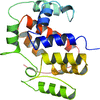
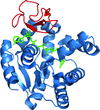




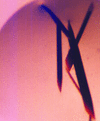
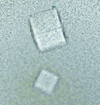


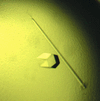
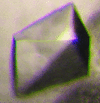

















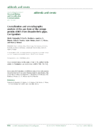
![[publBio]](/logos/publbio.gif)






